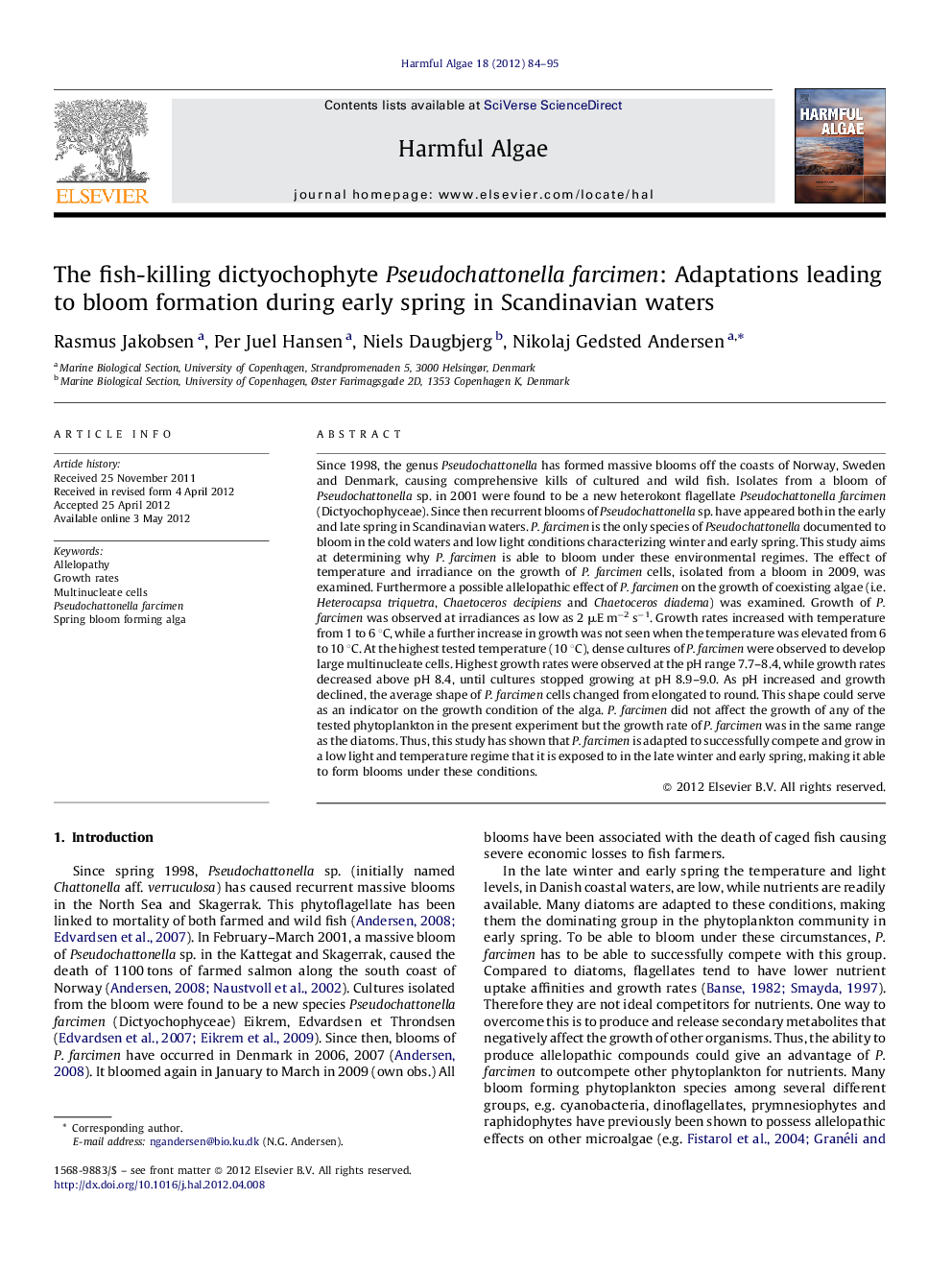| کد مقاله | کد نشریه | سال انتشار | مقاله انگلیسی | نسخه تمام متن |
|---|---|---|---|---|
| 4545539 | 1626952 | 2012 | 12 صفحه PDF | دانلود رایگان |

Since 1998, the genus Pseudochattonella has formed massive blooms off the coasts of Norway, Sweden and Denmark, causing comprehensive kills of cultured and wild fish. Isolates from a bloom of Pseudochattonella sp. in 2001 were found to be a new heterokont flagellate Pseudochattonella farcimen (Dictyochophyceae). Since then recurrent blooms of Pseudochattonella sp. have appeared both in the early and late spring in Scandinavian waters. P. farcimen is the only species of Pseudochattonella documented to bloom in the cold waters and low light conditions characterizing winter and early spring. This study aims at determining why P. farcimen is able to bloom under these environmental regimes. The effect of temperature and irradiance on the growth of P. farcimen cells, isolated from a bloom in 2009, was examined. Furthermore a possible allelopathic effect of P. farcimen on the growth of coexisting algae (i.e. Heterocapsa triquetra, Chaetoceros decipiens and Chaetoceros diadema) was examined. Growth of P. farcimen was observed at irradiances as low as 2 μE m−2 s−1. Growth rates increased with temperature from 1 to 6 °C, while a further increase in growth was not seen when the temperature was elevated from 6 to 10 °C. At the highest tested temperature (10 °C), dense cultures of P. farcimen were observed to develop large multinucleate cells. Highest growth rates were observed at the pH range 7.7–8.4, while growth rates decreased above pH 8.4, until cultures stopped growing at pH 8.9–9.0. As pH increased and growth declined, the average shape of P. farcimen cells changed from elongated to round. This shape could serve as an indicator on the growth condition of the alga. P. farcimen did not affect the growth of any of the tested phytoplankton in the present experiment but the growth rate of P. farcimen was in the same range as the diatoms. Thus, this study has shown that P. farcimen is adapted to successfully compete and grow in a low light and temperature regime that it is exposed to in the late winter and early spring, making it able to form blooms under these conditions.
► Pseudochattonella farcimen is adapted to successfully compete and grow in a low light and temperature regime.
► P. farcimen showed no allelopathic effects on other algae cells.
► P. farcimen develop large multinucleate cells at temperatures above 6 °C.
► The percentage of round cells of P. farcimen could serve as an indicator on the growth condition of the alga.
Journal: Harmful Algae - Volume 18, June 2012, Pages 84–95